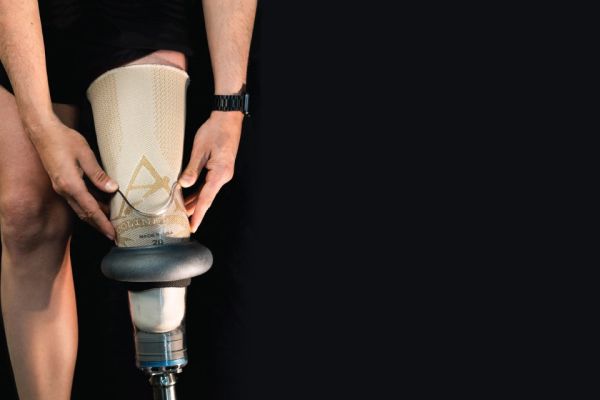An App to Avoid Amputation
Author: Thrive Staff Writer

Dr. Karen Cross, a skin specialist and surgeon, from Newfoundland and Labrador is working on an app / device for
smart-phones that could help people with diabetes keep their feet.
"This piece of technology essentially sees what the eye cannot see," Cross told CBC's Central Morning Show. "You take a quick picture and it can give us all this novel information about your physiology."
Cross said diabetics have a number of things going on that make them prone to foot problems that can escalate and ultimately need amputating. "They have a harder time getting blood and nutrients to the tiny vessels in their extremities," she said. "That makes them prone to numbness, injury. and infections. Their immune systems are already compromised, which makes it harder for them to fight the infection."
Cross is a skin specialist and a surgeon, specializing in patients who cannot heal their skin problems. In her regular practice, she found that diabetic patients were coming to her too late.
"I was amputating limbs more than was necessary," she said. In response, she developed Mimosa, a small camera and an accompanying app, to help stop that trend.
The small camera attaches to a patient's smartphone and, using specialized light, takes a detailed image of a patient's foot and determines whether there are problems with the skin that could lead to diabetic infection that aren't yet noticeable to the human eye. The app connects with the patient's doctor or healthcare provider to share the images.
"This technology can, through artificial intelligence, look at [your foot] and say, 'OK, your foot's OK today,' or 'Your foot's not OK,' and your physician can screen those images," she explains. So far, trials for Mimosa have taken place in Toronto, where Cross lives and works. It has been tested within the hospital system and other healthcare sites. Next, Cross will be looking for rural participants to test the app. The platform is pending approval from the Food and Drug Agency and Health Canada and Cross expects it to be commercially available within two years. First published at www.cbc.ca with files from the Central Morning Show.
Cross said diabetics have a number of things going on that make them prone to foot problems that can escalate and ultimately need amputating. "They have a harder time getting blood and nutrients to the tiny vessels in their extremities," she said. "That makes them prone to numbness, injury. and infections. Their immune systems are already compromised, which makes it harder for them to fight the infection."
Cross is a skin specialist and a surgeon, specializing in patients who cannot heal their skin problems. In her regular practice, she found that diabetic patients were coming to her too late.
"I was amputating limbs more than was necessary," she said. In response, she developed Mimosa, a small camera and an accompanying app, to help stop that trend.
The small camera attaches to a patient's smartphone and, using specialized light, takes a detailed image of a patient's foot and determines whether there are problems with the skin that could lead to diabetic infection that aren't yet noticeable to the human eye. The app connects with the patient's doctor or healthcare provider to share the images.
"This technology can, through artificial intelligence, look at [your foot] and say, 'OK, your foot's OK today,' or 'Your foot's not OK,' and your physician can screen those images," she explains. So far, trials for Mimosa have taken place in Toronto, where Cross lives and works. It has been tested within the hospital system and other healthcare sites. Next, Cross will be looking for rural participants to test the app. The platform is pending approval from the Food and Drug Agency and Health Canada and Cross expects it to be commercially available within two years. First published at www.cbc.ca with files from the Central Morning Show.











 How to resolve AdBlock issue?
How to resolve AdBlock issue?